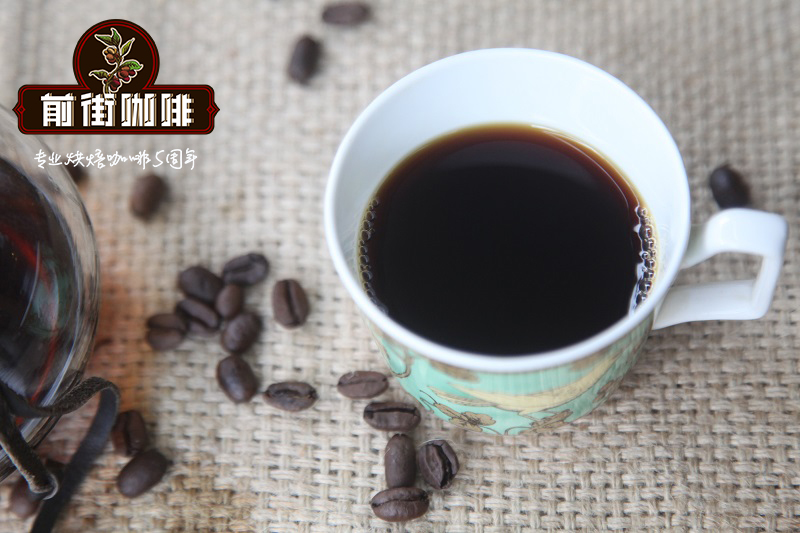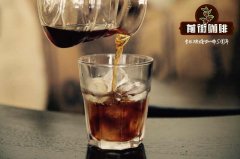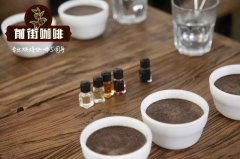African Kenya Meru coffee beans production area introduction Kenya coffee taste characteristics introduction

Professional coffee knowledge exchange more coffee bean information please follow the coffee workshop (Wechat official account cafe_style)
Growing environment of coffee beans planted by small farmers in MERU (Meru) producing area in Kenya
MERU (Meru)
MERU: most of the coffee in this area is grown by small farmers in the foothills of Kenya and in the Nyambene hills. The name refers to the magnetic field area and the Meru people who live there. They were the first Kenyans to start producing coffee in the 1930s because of the importance of guaranteeing the rights of people of African descent in Kenya in the White Paper (devonshire white paper) signed in 1923.
Altitude: 1300 to 1950 m
Harvest period: October to December (main production season), June to August (by-product season)
Varieties: SL-28, SL-34, ruiru11, Batian, K7
In 1930, cultivated by the "Scott Laboratories" laboratory,
The named Kenyan unique varieties SL28 and SL34 were born in such a good environment.
According to botanists in SL laboratory, SL28 and SL34 are genetic variants.
Among them, SL28 has a mixed pedigree of French missionaries, mochas and Yemens Tibica.
The goal of cultivating SL28 in the first place
It is hoped that coffee beans with high quality and resistance to diseases and pests can be produced in large quantities.
Although the output of SL28 was not as large as expected.
But copper leaves and broad bean-shaped beans have a great sense of sweetness.
A sense of balance and complex flavor, as well as significant citrus, black plum characteristics.
While SL34 and SL28 are similar in flavor, except for complex and changeable acid quality.
And great sweetness at the end, the palate is heavier, more full-bodied and cleaner than SL28.
SL34 has French missionaries, bourbon, and more Tibica ancestry.
Dou looks similar to SL28, but is more adaptable to sudden heavy rain.
It is these two important varieties that lead us to the unique Kenyan style:
Intense acidity, full-bodied taste and beautiful balance.
END
Important Notice :
前街咖啡 FrontStreet Coffee has moved to new addredd:
FrontStreet Coffee Address: 315,Donghua East Road,GuangZhou
Tel:020 38364473
- Prev

Geisha Iron pickup Coffee from Gekishan also known as Rose Summer
Professional coffee knowledge exchange more coffee bean information Please pay attention to the coffee workshop (Wechat official account cafe_style) which seems to come from Kyoto, but with the elegance and gentleness of Kyoto, how many famous guests are attracted to break through the manor, just to leave a rare afterscent in the proud sun. The geisha is a Tibica tree species originating from the Geisha Mountain (Geisha) in Ethiopia and from Costa Rica in 1963.
- Next

Coffee from the KIAMBU region of Kenya has round beans, thick flesh and obvious fruit flavor.
Professional coffee knowledge exchange more coffee bean information please follow the coffee workshop (Wechat official account cafe_style) AA level "SL28" of Monteiro Manor in Kyakiambu District, Kenya AA Mtaro National Kenya production area Kiambu graded AA (SC18+) producer Monteiro Manor Water washing-Kenyan variety SL28,Ruiru11,Batian 1600 cm above sea level
Related
- Detailed explanation of Jadeite planting Land in Panamanian Jadeite Manor introduction to the grading system of Jadeite competitive bidding, Red bid, Green bid and Rose Summer
- Story of Coffee planting in Brenka region of Costa Rica Stonehenge Manor anaerobic heavy honey treatment of flavor mouth
- What's on the barrel of Blue Mountain Coffee beans?
- Can American coffee also pull flowers? How to use hot American style to pull out a good-looking pattern?
- Can you make a cold extract with coffee beans? What is the right proportion for cold-extracted coffee formula?
- Indonesian PWN Gold Mandrine Coffee Origin Features Flavor How to Chong? Mandolin coffee is American.
- A brief introduction to the flavor characteristics of Brazilian yellow bourbon coffee beans
- What is the effect of different water quality on the flavor of cold-extracted coffee? What kind of water is best for brewing coffee?
- Why do you think of Rose Summer whenever you mention Panamanian coffee?
- Introduction to the characteristics of authentic blue mountain coffee bean producing areas? What is the CIB Coffee Authority in Jamaica?

